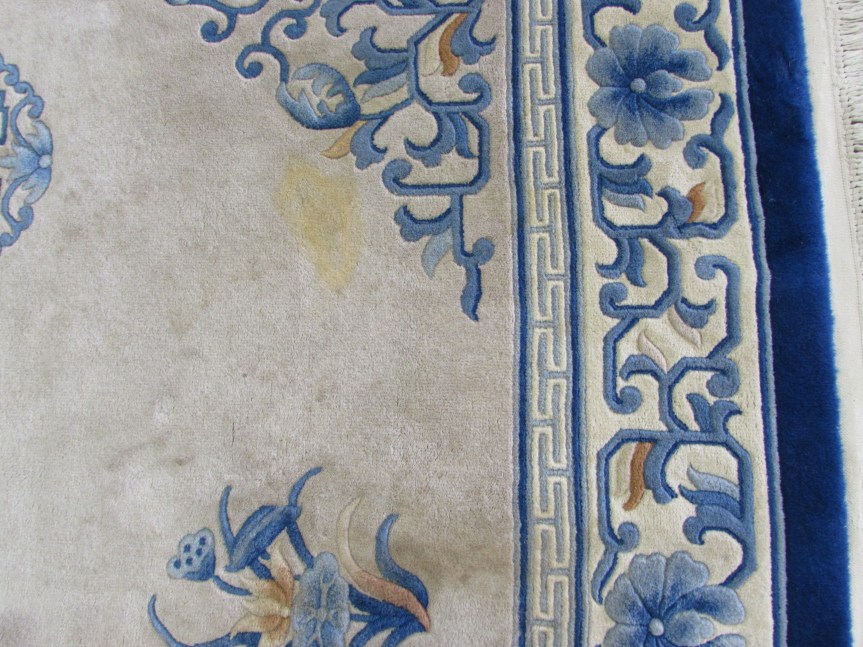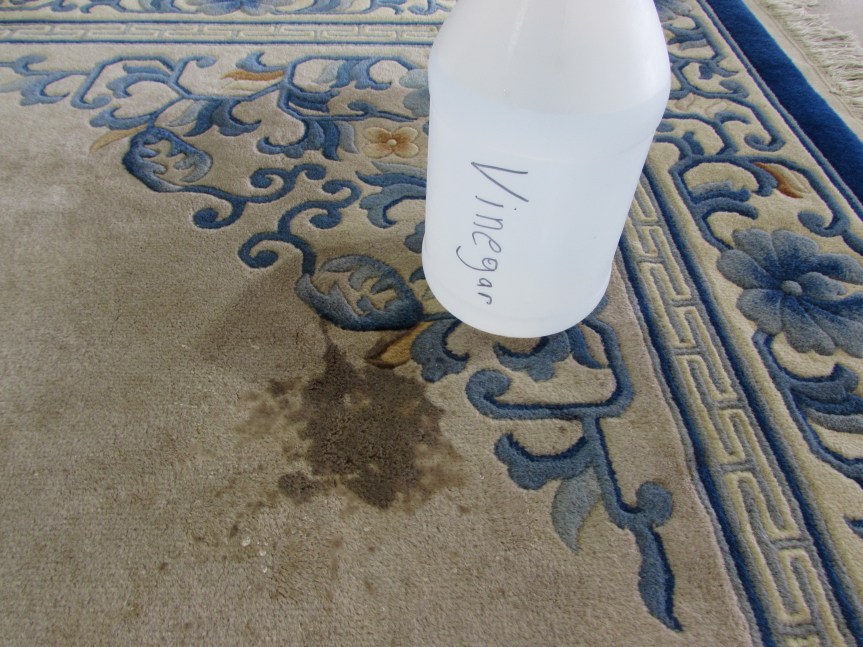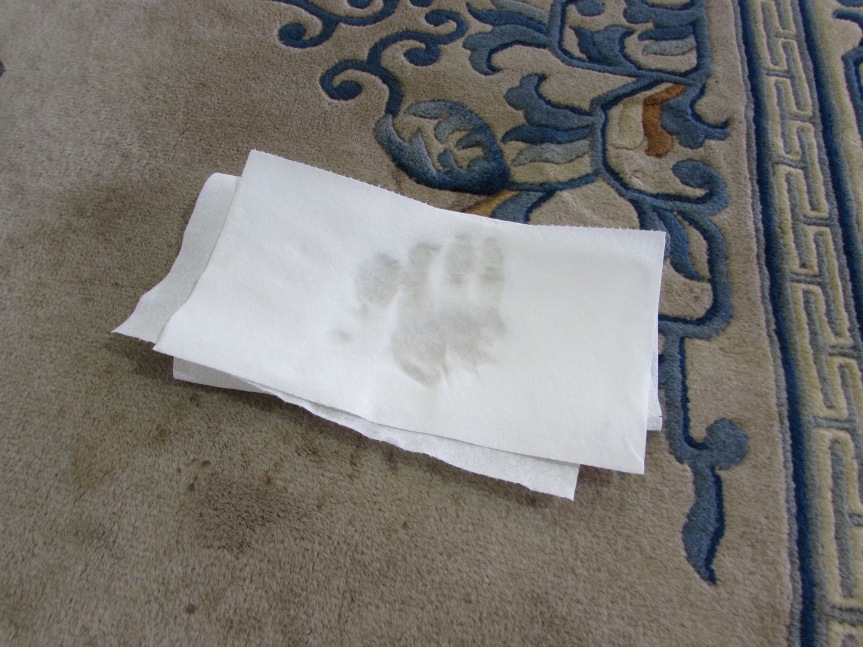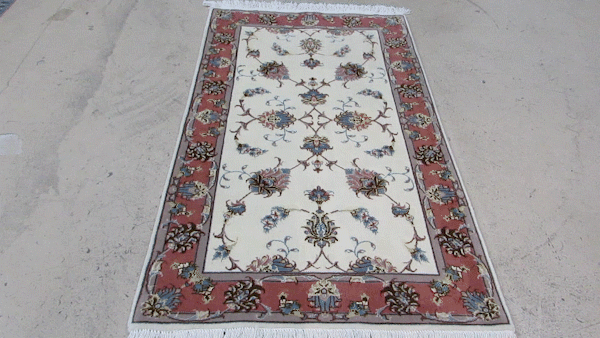We all love our animals. They brighten our days, lift us up when our spirits are down, and make our homes feel complete. Unfortunately, accidents are inevitable, and even the best dogs and cats will occasionally have an accident on your Oriental rugs. Today, we are going to go over a few quick steps you can take to help prevent damage and odor from pet urine. Keep in mind, these steps can be effective at removing urine from your wall to wall carpet as well.

You will need- White Vinegar and paper towels or dry rags.

Step 1 – If the spot is still wet, poultice the area. If it is already dry, move on to step 2.
The first reaction a lot of folks have is to wipe the area up with a wet rag. A much more effective method is “poulticing”. To poultice a spot, take a dry rag or paper towels and apply downward pressure on it. The moisture will soak into the rag and get sucked out of your rug. A poultice is more effective because it doesn’t spread the spot around and removes a much greater quantity of moisture. It’s important to note, that if you own good wet vacuum that is capable of removing moisture, you can use that instead of poulticing the spot.

Step 2 – Apply white vinegar.
White vinegar is great for eliminating the odor of most pet urine. It also helps to keep the dye in your rug set, preventing color migration. Pour enough white vinegar directly onto the spotted area to soak it. While the odor of the vinegar is intense, it will fade quickly as the area dries out.

Step 3 – Let it sit for 3 to 5 minutes.
We call this “dwell time”. The white vinegar will help break down the bonds holding the urine in place. This is especially important if you are dealing with cat urine as it tends to have oils that need to be broken down.
Step 4 – Poultice out the white vinegar
Much like step one, use a poultice to remove the white vinegar. Again, if you have a good wet vacuum, you can use it instead.

Step 5 – Smell the area, possibly repeat steps 2 through 4.
Take a quick sniff of the area, if you can still smell the urine over the vinegar, it means you need to repeat steps 2 through 4. If the white vinegar is the only thing you are smelling, move on to step 6.
Step 6 – Dry the area quickly and correctly.
Getting your rug dry quickly and effectively is a crucial part of keeping the bacteria in the urine from heavily reproducing. Air flow is key, so using a box fan or desk fan to blow over the wet area will go a long way towards this. If you can expose both the top and bottom of the rug to that air flow, it will speed up the process tremendously. You can prop books up underneath your rug or even drape it over a chair to achieve this.

Once dry, you have done all you can to treat the spot. In most cases, you will find that the smell is gone and the staining reduced. It is important to note, that while this helps the appearance and smell of your rug, it does not really disinfect it. If sterilization is what you are after, or if problems still persist, it’s probably time to have your rug washed professionally. Full immersion cleaning is by far the most effective technique for eliminating and disinfecting urine.
When it comes to prevention, consistent training of your beloved pet is the first step. Some great material on how to train your pets can be found here –
https://www.cesarsway.com/dog-training/housebreaking-issues/housebreaking
Even the best trained pet will have occasional accidents, so what can you do to help make sure those accidents don’t soak into your rug? We recommend Fiber ProTector brand stain guard. Built to keep moisture form soaking into the fibers of your rug, Fiber ProTector can keep any accident from becoming a more troublesome spot.

And of course, always remember that for a tougher more stubborn spot, Serafian’s can get your rug 100% clean and disinfected. If you have any questions about these steps or other rug related questions, feel free to e-mail us: Serafians@gmail.com

By: Matt Gabel
Matt Gabel is the Retail Manager at Serafian’s Oriental Rugs. He has been working closely with rugs for over 25 years. Serafian’s offers free pick up and delivery in the Albuquerque metro area. For more information, call (505) 504-RUGS or go to serafians.com




